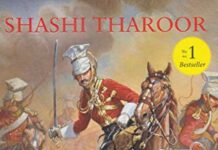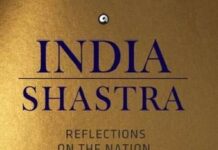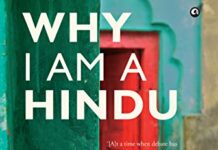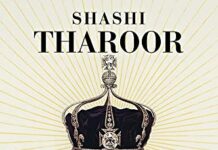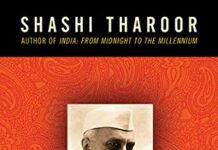
Ebook Info
- Published: 2013
- Number of pages: 459 pages
- Format: PDF
- File Size: 1.40 MB
- Authors: Shashi Tharoor
Description
In this lively, informative and insightful book, Shashi Tharoor brilliantly demonstrates how Indian diplomacy has come of age and forecasts where it will need to focus in the new millennium. He surveys India’s major international relationships in detail, evokes the country’s soft power and offers his thoughts on a new ‘grand strategy’ for the nation, arguing that India must move beyond non-alignment to multi-alignment. Stimulating, reflective, elegantly written and passionately engaged, Pax Indica is another substantial achievement from one of the finest Indian authors of our times.
User’s Reviews
Reviews from Amazon users which were colected at the time this book was published on the website:
⭐Shashi Tharoor is an extremely fine and nuanced writer who once aimed to be United National Secretary General and has decades of experience in working at the world’s headquarters. He also had a stint in India’s external (foreign) affairs ministry; reasons good enough to give this book a try.Those steeped into geo-politics and trends would struggle to suppress a yawn but from an Indian perspective it as as good as it gets. There is hardly any worthwhile publication or book on India’s foreign policy which to be fair has largely revolved around Pakistan for most part of its independent existence.Things have begun to change in this millennium and the present Modi government seems to have a vigorous direction in mind. India has unique geographic, demographic and cultural advantage and with its present improving economic strength—presently world’s seventh best economy—it is being taken very, very seriously in international forums. Its’ democracy, with dozens of states, varying climates, religions and dialects continue to be a shining light in world arena.Tharoor takes up most of these issues but mostly exerts a light touch on them. He clearly seems politically inhibited and at times even appears a publicist (an apologist) for the UPA government to which he was a part and continues to harbour ambitions within Congress, a party which was mostly in power in independent India’s existence.Tharoor touches most of 20th century from an Indian perspective. There is a mention of how India’s GDP hardly rose to 1 per cent between 1900-1947 under British Raj; how India sought neutrality yet was seen in Soviet Union camp in its initial decades of independence, how it turned a leaf into the 90s with opening of economy. There is a justifiable emphasis on India’s emigrant strength—the second largest in the world with 11.4 million—as well as its progress on literacy and child-mortality front.There is hardly an angle which is missed by Tharoor. So you have an insider’s brief of India’s engagement with practically every nation of the world; India’s marked emphasis on “Go East” policy (riding on its cultural strength and background of centuries where Buddhism was a decisive factor). Enjoyable sections include India’s marked difference in approach to Africa, compared to China etc. India’s growing engagement with Latin America, the BRICS prospects and variously international forums aren’t missed either. There is more than a subtle hint that World Bank and IMF led international financial institutions are due for a shake-up soon as world’s majority of powerless nations clamour for a place in the sun.Pakistan and US of course take a sizeable attention but a reminder is also conveyed on India’s historical links with Middle East and how a delicate handling is required now that India’s relations with Israel are on the up—they being the second largest arms exporter to India besides their technical support in agriculture.Most enjoyable chapters I found was insight on United Nations and how it functions. Tharoor reserves his strongest disapproval on the poor numerical strength of India’s diplomatic corps. India has far less diplomats and staff’s presence in the world than compared to even smaller nations such as Singapore. There is also suitable criticism how foreign policy has always been controlled by Prime Minister and the foreign affairs ministry has its area of operations usurped by cultural affairs and immigration ministry at times. A better coordination between ministries, and hefty budget, is desperately required for India’s foreign policy to get the attention and expertise it deserves. Above all, the legacy of India’s past foreign policy experts and training of new corps has a weak thread which at times gives it an ad hoc appearance.Tharoor might have given us a pocket edition or “India’s foreign policy in a day” kind of book. It might appear “dumbing-down” to sensible and informed readers. But it still is a good introduction, a firefly in the jungle of darkness; a drill in the iron curtain which affords us a peep in labyrinth of India’s foreign policy.
⭐Excellent book for all those who want to know more about foreign policy matters. Amongst the most common perceptions that we as Indians always have or the question that why we don’t retaliate with our might to Pakistan’s in grown terrorism, is best explained in the book. One should also understand the importance of inclusive growth, which is also a solution to our inward problems of greater divide of rich and poor. The statistics of the contributions that India makes in the world affairs and also in the south east Asia is simply a mark of our efforts to keep peace, sustain culture etc within & outside of our territory. All these are notably highlighted in the book and no wonder why people say world would be watching India of the 21st century.
⭐The author, a former Under Secretary General at the UN and an outstanding diplomat, is at his usual best. Written in delightful prose, this book provides the reader with a thorough review of the practice of India’s relations with the world since independence. He also carefully analyzes the structure of the Indian Foreign Service and finds it wanting. Most importantly, he recommends a radical enlargement of the number of diplomats. He also calls for the recruitment of talent from other parts of the bureaucracy and even the private sector. My only criticism of the book is that the author does not consider the possibility of radical changes in the world order during the next few decades and simply assumes the current global order with a richer China and India.
⭐A must read for an Indian who want to reshape this world on most fundamental humanitarian principles. I would suggest Mr. Tharoor to update this book biennially, a must read for policy makers of India.
⭐A book that covers the author’s view of where India is and his opinions of where it should go. It is an apologist’s view of his time served in government. Some of the writing is tedious, whereas other parts move quite smoothly.
⭐Superbly written insight into how India foreign policy affects the common man. Foreign policy diplomacy affects fuel, food prices more than what middle class knows today. India middle class is possibly the most ignorant amongst democratic countries as it chooses to disassociate itself from local self-governance & foreign policy. Parts of this this classic Tharoor book should form curriculum in senior school so that students become more aware of how Govt, public policy & foreign policy intertwine to give them a Govt that works.
⭐Excellent book. I have read alot of books on foreign policy and diplomacy but this one is so engaging and not just throwing of random facts here and there. Amazing Tharoor Sir !
⭐Well written i must say, Dr Tharoor has shared some interesting incidents in a crisp language,The chapter on India-China relations and Soft-diplomacy is what makes this book an absolute must read..
⭐I came across this book while preparing for UPSC. Most suggest this book to get an understanding of the International Relations aspect of the syllabus for the UPSC exam. The book does offer a broad understanding of India’s foreign relations, however the insight one gleans from the book is shallow and lacks the depth of an insider ( probably faulty expectations from me).The repetition of core arguments repeatedly gives a feeling of the author going around in circles (most evident in Pakistan chapter)The book does come into its own towards the final chapters.Finally, the book does feel dated given the rise of social media and other changes across society
⭐Book Content: You’ll get an overall idea about the evolution of India’s Foreign Policy from Midnight to the Millenium, insights into the workings at the South Block and in the UN, and so on. Love his way of presentation and wit!Page Quality is average. 5 stars for the content of the book
⭐This review is NOT about the writer authorship. This is the book one would love to keep on their shelf as a reference and for long time, however book quality is use and throw type. Extreme poor quality of printing paper in the PAPERBACK version despite keeping it on 400+ INR . Not worth buying. I would suggest instead of this one should go for the kindle version which comes in 1/4 of this price.
Keywords
Free Download Pax Indica: India and the World of the Twenty-first Century in PDF format
Pax Indica: India and the World of the Twenty-first Century PDF Free Download
Download Pax Indica: India and the World of the Twenty-first Century 2013 PDF Free
Pax Indica: India and the World of the Twenty-first Century 2013 PDF Free Download
Download Pax Indica: India and the World of the Twenty-first Century PDF
Free Download Ebook Pax Indica: India and the World of the Twenty-first Century
